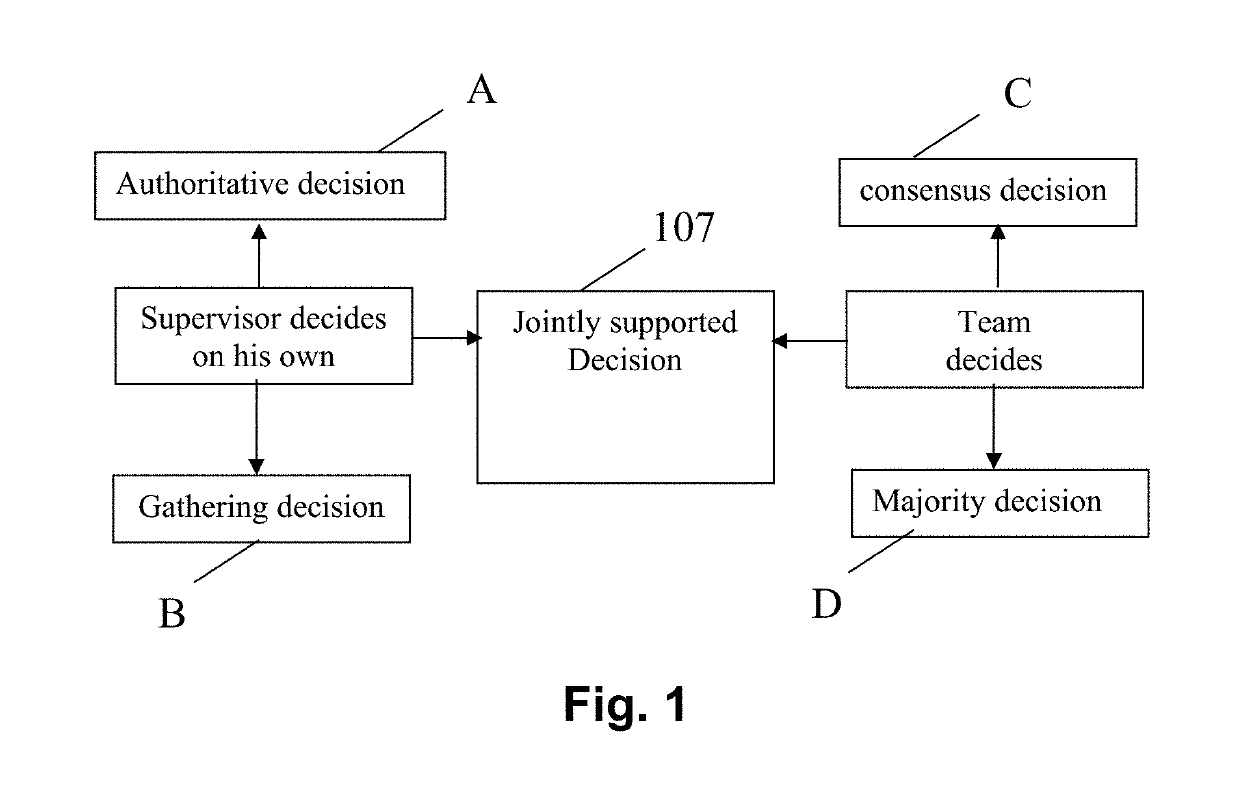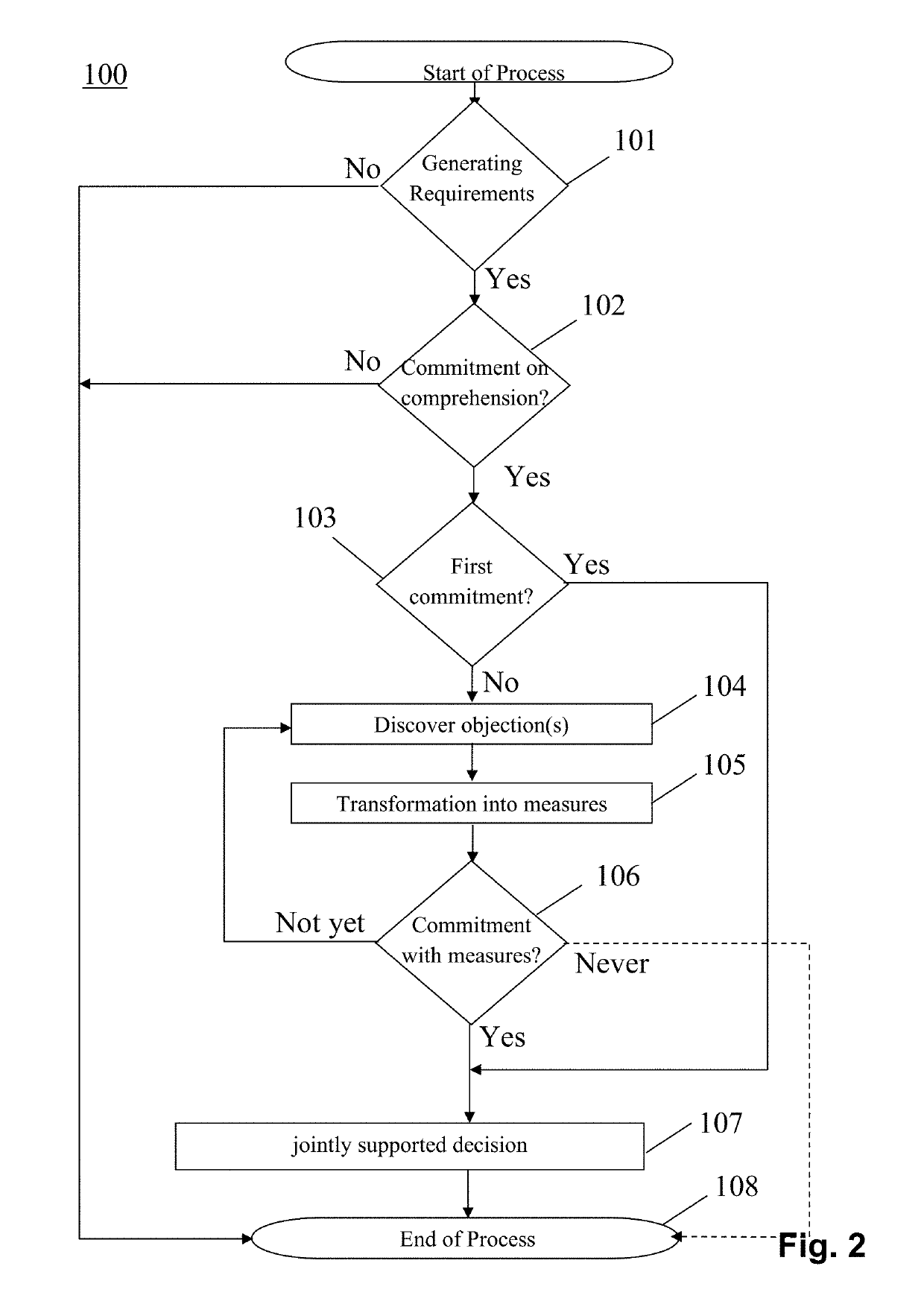Commitment process to generate jointly supported decisions
a technology of commitment and decision generation, applied in the field of commitment processes, can solve the problems of inconsistent motivation of employees, achieve the effects of reducing the effort for control and monitoring, reducing costs, and reducing delays
- Summary
- Abstract
- Description
- Claims
- Application Information
AI Technical Summary
Benefits of technology
Problems solved by technology
Method used
Image
Examples
Embodiment Construction
[0037]In FIG. 1, an exemplary overview of different types of decisions is shown. As shown therein, decisions can basically be divided into four types of decisions A, B, C, D and a jointly supported (a shared) decision 107. An authoritative decision A is a classic management style in which a supervisor makes the decision by himself and expects his staff to execute this authoritative decision. A gathering decision B is also an authoritarian decision that involves key players and experts. These key players and experts are previously independent of each other or are interviewed together—mostly without obligation. In a gathering decision B, an authoritative decision is still made by the manager but in contrast to decision A it is now made in view of an extended informational situation. Although there is some involvement lately, the decision types A and B remain with an authoritarian leader.
[0038]These types of decisions A and B have become standard with the emergence of post heroic leade...
PUM
 Login to View More
Login to View More Abstract
Description
Claims
Application Information
 Login to View More
Login to View More - R&D
- Intellectual Property
- Life Sciences
- Materials
- Tech Scout
- Unparalleled Data Quality
- Higher Quality Content
- 60% Fewer Hallucinations
Browse by: Latest US Patents, China's latest patents, Technical Efficacy Thesaurus, Application Domain, Technology Topic, Popular Technical Reports.
© 2025 PatSnap. All rights reserved.Legal|Privacy policy|Modern Slavery Act Transparency Statement|Sitemap|About US| Contact US: help@patsnap.com



